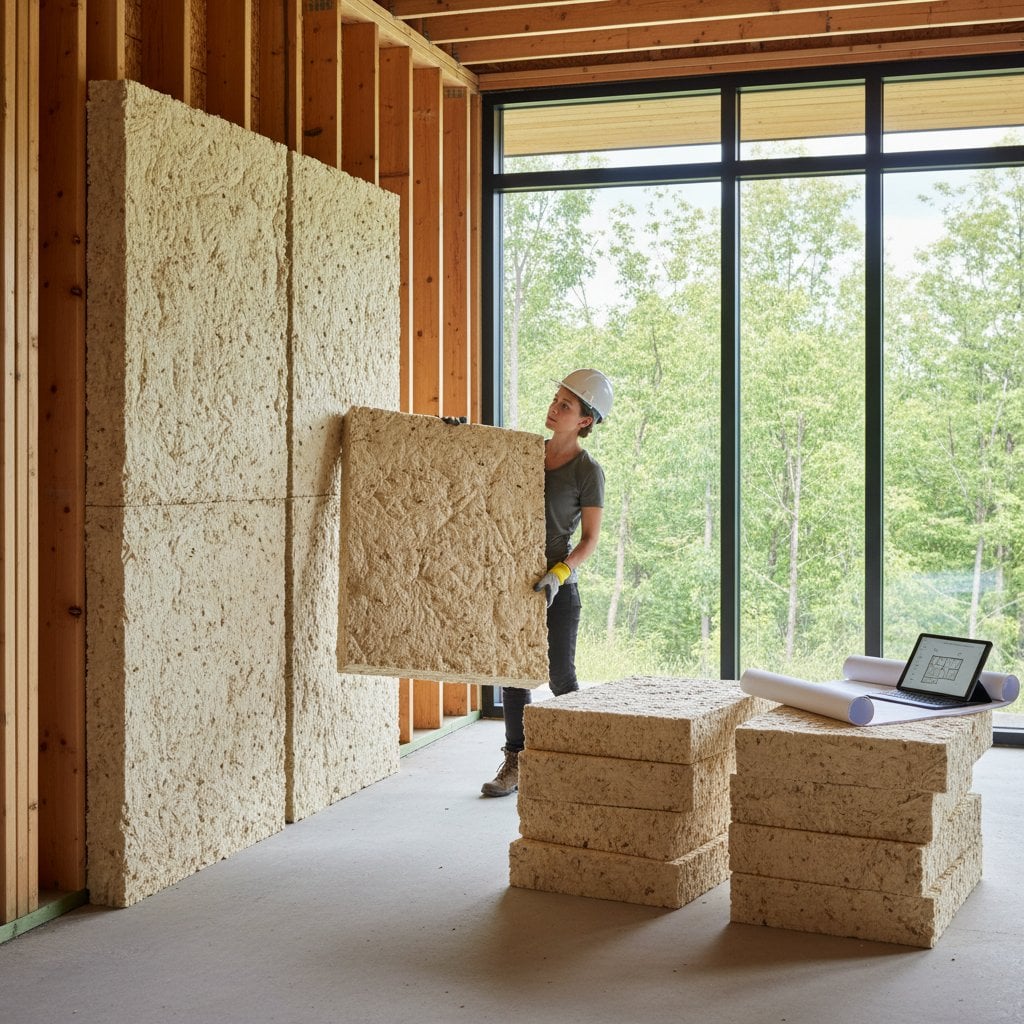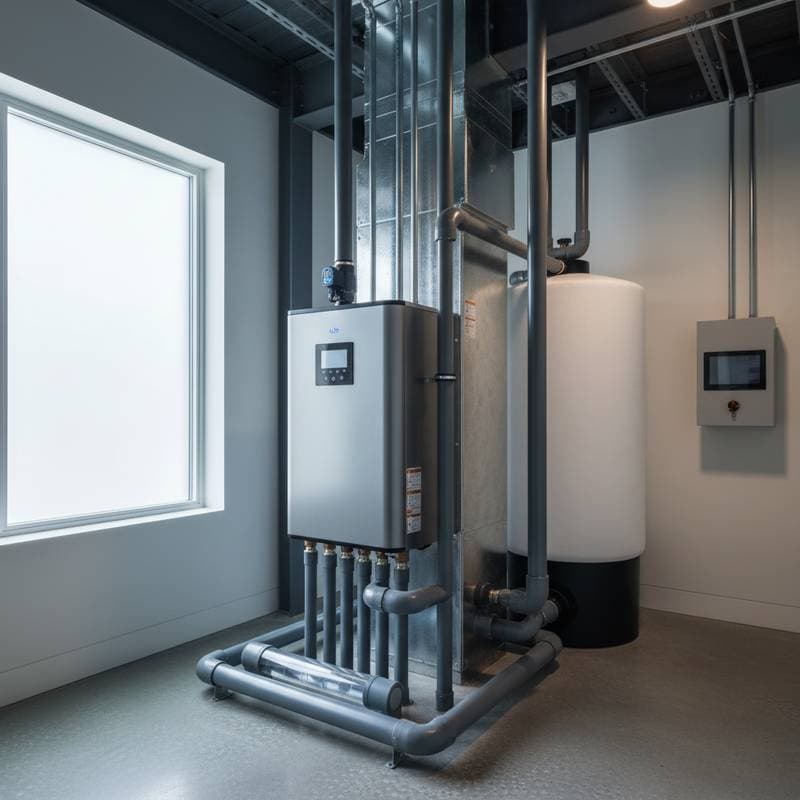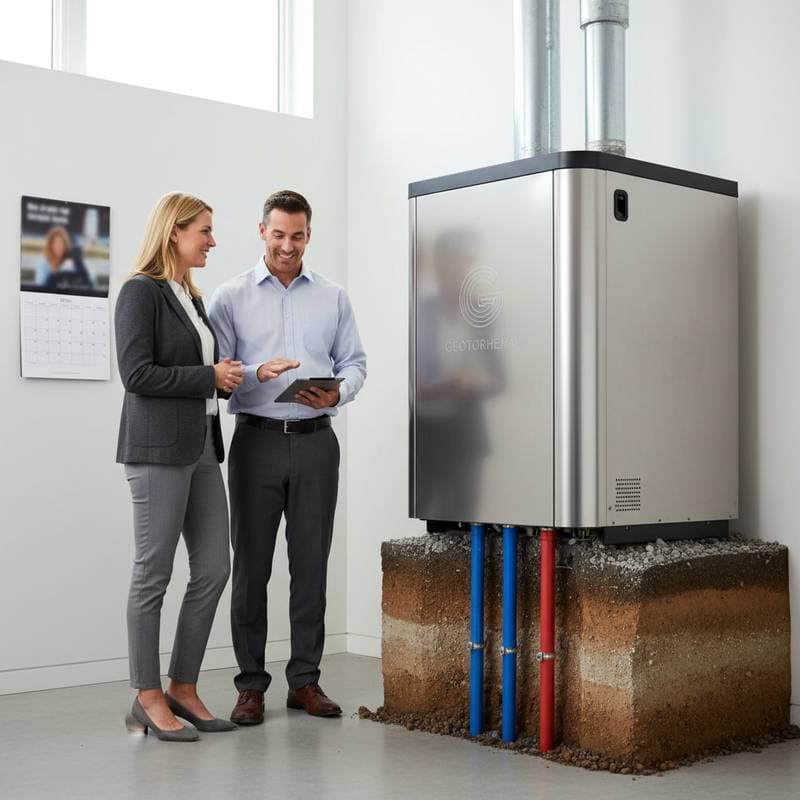Key Points
- Homeowners achieve up to 50 percent reductions in heating and cooling expenses through geothermal tax credits.
- Geothermal systems extract stable heat from the ground to ensure reliable comfort across seasons with low energy consumption.
- Professional installation and thorough planning secure incentives and maximize enduring savings.
- Optimal designs yield clean, quiet performance over decades with minimal upkeep.
Achieving Perfect Thermal Balance in Your Home
High HVAC bills often challenge homeowners, depleting budgets and reducing satisfaction. Efforts such as adding insulation, replacing filters, or upgrading to efficient units may fall short as costs rise. The earth's consistent temperature offers a powerful solution for natural comfort without excessive energy demands.
Envision entering your home on a humid day to encounter refreshing coolness independent of conventional air conditioning. In winter, the system pulls warmth from the ground to maintain steady comfort. Geothermal heating and cooling delivers this efficiency, and current tax credits make adoption more feasible than ever.
The Shift to Ground-Source Heat Pumps
Conventional HVAC systems struggle against variable outdoor temperatures. Ground-source heat pumps, however, exchange energy with the earth, which holds a constant temperature throughout the year. These systems consume up to 70 percent less energy than traditional alternatives.
Homeowners in areas with extreme seasonal variations gain the most advantages. During cold spells, energy demands remain stable rather than surging. In summer, the system extracts heat from the home and dissipates it into the ground.
This reliability lowers expenses and prolongs equipment durability. A well-installed geothermal unit operates for more than 20 years, while underground loops last even longer. For many, it forms the core of an eco-friendly residence.
Federal Incentives to Reduce Installation Expenses
Recent geothermal tax credits permit homeowners to recover a substantial portion of setup costs. Eligible systems qualify for reductions up to 50 percent based on type and criteria. Credits cover ground-source heat pumps that satisfy federal efficiency guidelines and receive installation from certified professionals.
Qualification requires the system to support a primary residence, or occasionally a secondary one. Equipment must achieve ENERGY STAR standards, with labor, piping, and loops included in the credit calculation.
Typical residential installations cost between $20,000 and $35,000. Credits provide savings of $10,000 to $17,500. Paired with 40 to 60 percent annual energy reductions, the return on investment accelerates significantly.
Understanding Geothermal HVAC Operations
Geothermal systems function as subsurface energy exchangers. Plastic loops positioned below the frost line circulate a water solution to capture or expel heat seasonally. Within the home, a heat pump converts this energy into air or water for distribution via ducts or radiant floors.
Common loop types include:
- Horizontal loops: Laid in yard trenches, suitable for properties with sufficient space.
- Vertical loops: Bored into the earth for sites with limited surface area.
- Pond or lake loops: Placed in adjacent water sources for enhanced performance where feasible.
Closed-loop designs demand little maintenance. Buried components operate silently for decades, eliminating the regular servicing required by standard HVAC equipment.
Strategies to Enhance Home Eco-Efficiency
Maximize geothermal benefits and tax credit eligibility with these expert recommendations prior to installation:
- Perform a home energy audit. Detect insulation deficiencies, drafts, or inefficient ducts. A sealed structure optimizes system performance.
- Select certified installers. Engage contractors trained in geothermal methods for design and excavation. Improper sizing compromises efficiency and credit approval.
- Request load calculations. Evaluate heating and cooling needs to determine accurate equipment scale. Oversizing leads to waste, while undersizing causes constant overwork.
- Combine with renewables. Integrate solar panels to approach net-zero energy use and further decrease bills.
- Evaluate site conditions. Analyze soil and water tables, as they may necessitate adjusted depths or configurations affecting costs and output.
Early collaboration with contractors on these elements avoids expensive adjustments later.
Costs, Return on Investment, and Upkeep
Geothermal setups involve initial spending, yet deliver strong financial and ecological gains over time.
- Installation expenses: Residential units typically range from $20,000 to $35,000, influenced by home size, ground composition, and loop type.
- Tax credit reductions: Qualified owners claim up to 50 percent of costs, easing the starting burden.
- Yearly utility decreases: Heating and cooling bills drop 40 to 60 percent relative to conventional systems.
- Maintenance needs: Yearly checks cost $150 to $300, including fluid analysis and adjustments.
John Patel, a certified geothermal designer, noted, "Homeowners often express surprise at the quiet consistency of these systems. Once in place, they require little attention as performance remains reliable year after year."
Geothermal technology also improves indoor air quality. Without combustion, risks of carbon monoxide diminish, and particulates decrease. Uniform temperatures prevent the fluctuations that affect comfort and health.
Advantages Across Regions and Climates
In humid coastal areas, geothermal excels in moisture removal, alleviating summer discomfort. Colder regions benefit from even heating without the dryness of forced-air units. Mixed climates receive balanced control for both heating and cooling demands.
Even established homes accommodate retrofits effectively. Careful loop positioning and duct reviews ensure success. Owners frequently note enhanced comfort and reduced noise shortly after startup.
Sustainable communities promote geothermal as a resilience measure. Utilities may provide extra rebates, and local governments expedite approvals for green projects. Federal and regional aids position geothermal central to climate adaptation efforts.
Selecting a Qualified Installer
Choose professionals accredited by the International Ground Source Heat Pump Association or similar bodies. Review at least three client references and verify familiarity with local soil types.
Prior to commitment, obtain:
- A detailed proposal outlining loop layout, component details, and estimated savings
- Proof of licensing and coverage
- Confirmation of ENERGY STAR adherence for credit qualification
For personalized advice, consult vetted green building specialists through established networks. They connect clients with verified experts upholding high standards in sustainability and safety.
Steps to Implementation
Begin with a property evaluation. The installer assesses layout, soil, and current HVAC setup. Drilling or trenching occurs over several days, followed by interior component placement and testing.
Retain all records for tax purposes, such as receipts and certifications. Installers supply required forms and data to confirm standards.
Experience the system's seamless comfort during weather shifts, and recognize its role in efficient, sustainable home management.
Enduring Gains for Households and Environment
Geothermal installations cut household carbon output by multiple tons each year. Across a system's life, this equates to offsetting emissions from several vehicles. Reliable efficiency shields against fluctuating energy prices.
Such homes exemplify responsible energy use, blending comfort with planetary care. Geothermal features also boost resale values, appealing to environmentally aware purchasers.
FAQs
Q: What is the typical payback period for a geothermal system?
A: Recovery occurs in 5 to 10 years for most owners, varying by local rates and consumption. Tax credits shorten this interval by offsetting initial expenses.
Q: Are geothermal systems viable for urban or compact lots?
A: Vertical loops adapt well to small spaces, including city settings. Contractors confirm drilling options during initial reviews.










